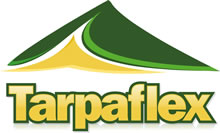Menu
- Home
- Phone: 01409 221192
- Contact Us
- Delivery Information
- Sign In
- Recent Orders
How To : Using Tarpaulins to Cover Hay
Tarpaulins offer an effective and economical solution for covering hay. However sheets need to be used properly, with the following points being observed as suggestions to ensure that your hay remains protected and does not spoil.
By using a tarpaulin to cover hay, the stock will be protected from the bleaching effects of sunlight, which causes hay to lose essential vitamins and nutritional value.
Polyethylene tarps are not breathable, and so won't allow moisture to escape. It is therefore essential that the hay is well ventilated; otherwise any moisture will be trapped. Too much moisture not only causes mould and mildew, but it is also a serious fire hazard. If hay is baled before its moisture content has lowered sufficiently, the high moisture level in the bale builds up heat which can even result in spontaneous combustion.
Hay should be stacked off the ground (wooden pallets are an effective method), to allow air to circulate underneath the bales. If the hay comes into direct contact with the ground, moisture can absorb into the bales causing them to spoil. Choose a well-drained storage site in as sunny location as possible, and preferably one where frequent breezes prevail.
It is best if you can leave the flat ends of the outside bales, and a few inches along the sides of the rows, uncovered to allow moisture to escape and air to circulate. You should check the tarps regularly to ensure they're securely tied down, and are free of any holes or tears through which water might penetrate. Bales should be stacked in staggered rows; a small gap allows air to circulate more freely.
Tarpaulins should be firmly secured to stop them flapping around or blowing off. If it's allowed to catch in the wind, a tarpaulin will act like a sail and can tear from its fixings. Bungee cord is elasticated and relieves pressure applied to the eyelets, see our range of popular ball bungee, shock cord with hooks or reels of shock cord. We recommended elasticated cord as it will act as a shock absorber and be kinder to the eyelets. Rope, twine or similar is more rigid and doesn't allow any give on the eyelets. Rope however is more economical and suggested to wrap around or over a hay bale in a criss cross method to help keep the tarp secure.
Also be aware that friction will occur when rubbing against a coarse material like hay or straw. This can weaken the material which in turn can lead to water ingress. Check your cover for any weak spots or areas where rubbing is likely to wear down the material.
Above all, a tarp is designed and intended as a temporary covering measure; these sheets are not substitutes for buildings or permanent structures. That said, when used correctly a tarpaulin can offer excellent protection for your hay and straw. A great starting place for temporary covers are the medium-duty waterproof Super Tarpaflex which is a popular cover for short term jobs. For more durability look at 250gsm tarps up to our 560gsm PVC.
About Tarpaflex Ltd
Tarpaflex Ltd is one of the UK's leading suppliers of tarpaulins and coverings. Delivering all over the United Kingdom and Europe, Tarpaflex has one of the most comprehensive ranges of tarpaulins available on the market. From flame retardant tarpaulins to dust sheets, camouflage tarpaulins to debris netting, whatever your tarpaulin need, Tarpaflex Ltd has it covered.
Tarpaflex is a family run business, based in Devon with over twenty years experience within the business. Over the years they have become one of the most highly respected and established tarpaulin suppliers in both the UK and North America.


